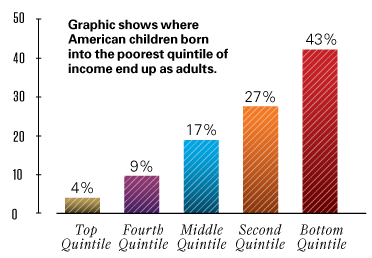Hawaii’s Overall Economy
Hawaii has the highest overall cost of living in the country and the highest housing costs. Here are key statistics, both good and bad.

RELATIVELY LOW UNEMPLOYMENT
Since the official end of the recession in 2009, Hawaii’s seasonally adjusted unemployment rate has been consistently 2 to 3 percentage points lower than the national rate.

Mapping Our Economy
This systems map provides an integrated view of the “loops” that reinforce each other within the local economy.
Poverty in Hawaii
Hawaii Island has the highest rate of poverty
in the state by far; tragically, one-sixth of all
Hawaii children under the age of 5 live in poverty.

Economic Mobility
Rags to riches rarely happens, but Hawaii has better outcomes on average than America as a whole.

The American promise that anyone who works hard can do better than their parents has been tarnished by the reality of how few people rise out of poverty. However, it happens more often in Hawaii’s cities than in most of America and we’ll get to that in a moment.
First, America as a whole. The Economic Mobility Project of the Pew Charitable Trusts tracked families from 1968 to today and found that 43 percent of Americans raised in families within the bottom 20 percent of the income ladder were still there as adults. Only 4 percent of those poor children made it into the wealthiest one-fifth of American households.
Other countries fare much better on economic mobility: Canada, the United Kingdom and the Scandinavian countries are among those where fewer than 30 percent of the people born into the bottom quintile stay there as adults.
A separate study by the Federal Reserve Bank of Chicago in 2007 found that economic mobility in America “increased from 1950 to 1980 but has declined sharply since 1980.”
Mobility is usually easier in America’s big cities than in rural areas, according to a study from the Equality of Opportunity Project, lead by researchers from Harvard University and the University of California at Berkeley. Honolulu ranked 13th highest in mobility among the nation’s top 100 commuting zones, with 10.1 percent of those born into the bottom fifth of income reaching the top fifth in adulthood. Salt Lake City had the best odds, 11.5 percent, and Memphis the worst, at 2.6 percent.
Here’s how other Hawaii cities ranked by that same measure:
- Kapaa: 10.1
- Kahului: 8.7
- Hilo: 8.2
The project also calculated Absolute Upward Mobility: What happens in adulthood, on average, to a child born to parents at the 25th percentile of national income. The best score on Absolute Upward Mobility was 63.8 for the town of Bowman, N.D., which meant that the average person born there into the 25th income percentile made it, on average, to the 63.8 income percentile as an adult. Here’s how Hawaii cities did on Absolute Upward Mobility:
- Honolulu: 44.7
- Kapaa: 44.4
- Kahului: 43
- Hilo: 40.5
The worst ranking went to Mission, S.D., with an outcome of 26.
